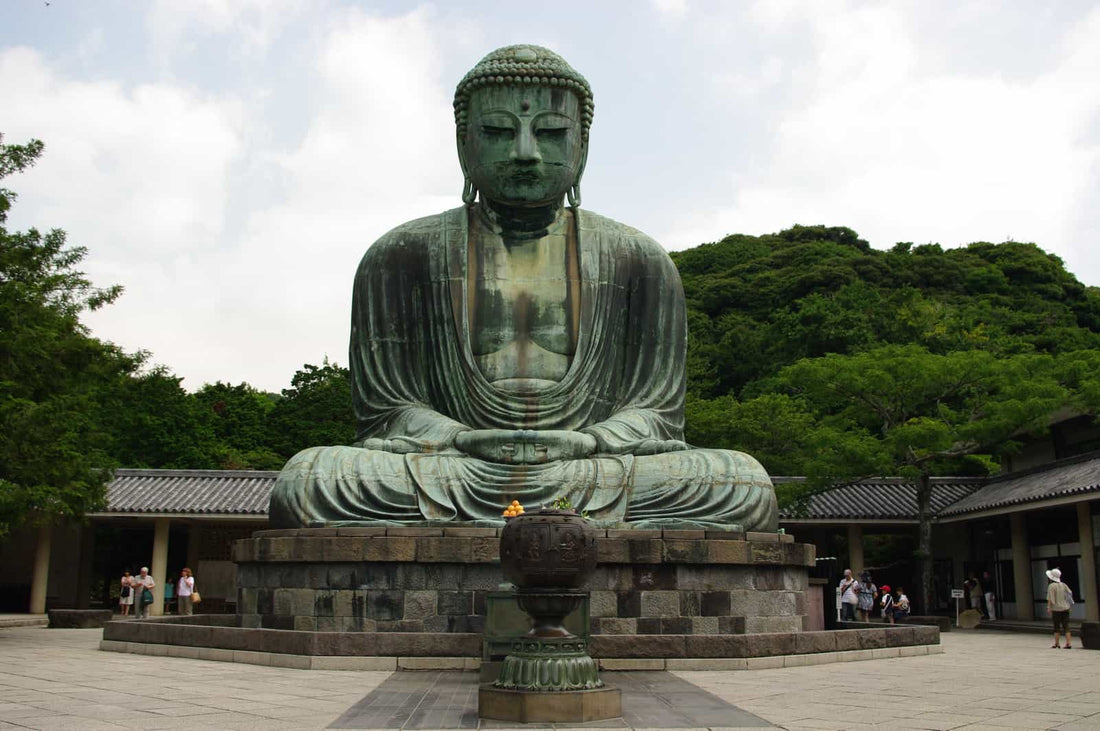Buddhism is the fourth-largest religion in the world, with over 520 million followers still to this day. Known as a highly spiritual religion, the aspiration of a Buddhist is to achieve enlightenment through the practice and development of morality, meditation and wisdom.
This blog post will explore one of the two existing branches of Buddhism known as Mahayana Buddhism, delving into its history and it’s relevancy in Japan today.
How is Mahayana Buddhism Different?
Before we are able to explore Mahayana Buddhism practices, it’s important to understand the history of how it began. Mahayana Buddhism was created when Buddhism split into the two branches of Theravada and Mahayana. Although the two branches share the same fundamental beliefs, there are some subtle differences that can be observed.
Theravada Buddhism
- The origin of Theravada Buddhism is tied more closely to South East Asia and shares similarities with the traditional Indian form of Buddhism.
- The main Bodhisattva (a being that compassionately refrains from reaching nirvana to save others and help them on the path of enlightenment) is Maitreya. Theravada suggests that the Bodhisattva should seek enlightenment themselves first before helping others.
- The teachings of Theravada revolve around silent and mindful meditation.
Mahayana Buddhism
- Mahayana Buddhism grew popular in the Northern regions of Tibet and China and took on the more local customs in areas such as Japan, China and Korea.
- The Bodhisattva in Mahayana does include Maitreya but also includes a number of other non-historical figures. Mahayana stipulates that the Bodhisattva must delay their realisation in order to help others stuck within the Samsara, which is the endless cycle of birth, death and re-birth also known as the world of suffering and dissatisfaction.
- Mahayana meditation is more tantric based and places greater emphasis on mantras and chanting.

Practices of Mahayana Buddhists
There are numerous subdivisions of Mahayana Buddhism, with the most universally recognised being that of Zen. Zen literally translates as “meditation” from the Japanese language and this school of Buddhism recognises the value of meditation and intuition rather than ritual worships and the study of scriptures.
Zen became firmly established during the thirteenth century, as the warrior class began to practice this type of Buddhism more heavily. Its emphasis relies on personal experience and therefore it is a practice-orientated tradition.

Mahayana Buddhism Today
The Mahayana branch of Buddhism is without doubt the most popular form of Buddhist practice throughout Japan today with over 53% of practitioners compared with 36% for Theravada and just 6% for Vajrayana. However, there are still so many other religions practised in Japan, one of the most popular being
the Shinto religion. This is the one of the oldest surviving religions and considered the indigenous religion of modern day Japan.
Mahayana Buddhism is now often referred to as a method of dealing with death and funerals, known as “funeral Buddhism”. Buddhist monks are often approached for funerals and ceremonies honouring the dead, specifically when families wish to seek alters, as these are seen as a way of honouring relatives who have passed.
The significance of the Buddha is still hugely prevalent in Japan and the cultural roots still permeate daily life for many Japanese people. To reflect this, we have a number of Japanese gifts inspired by
Buddha to celebrate a religion steeped in such a rich history. From Japanese puzzles to miniature lucky Buddhas we have a varied collection which make the perfect gift for yourself or a loved one.



